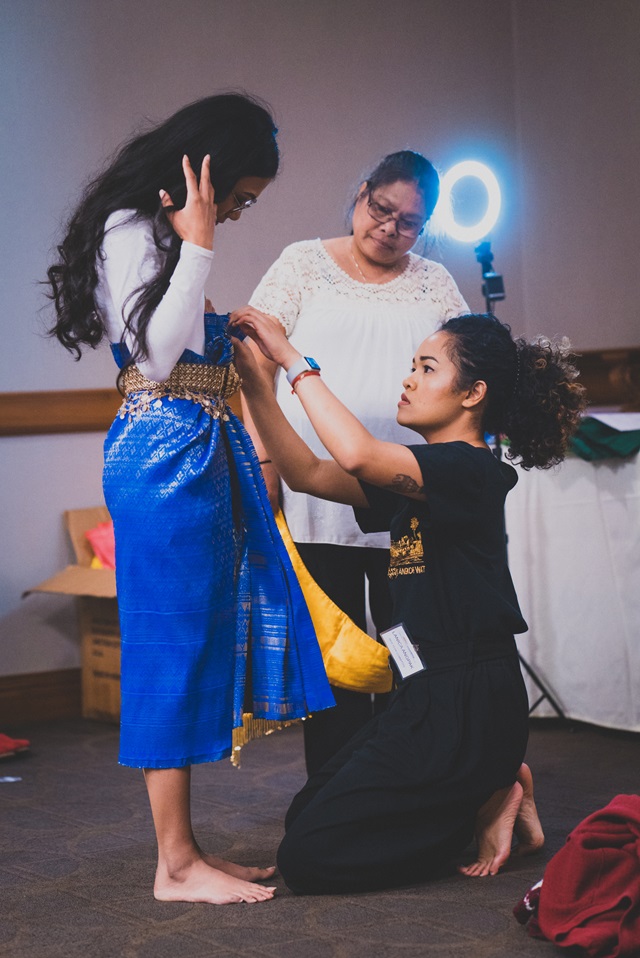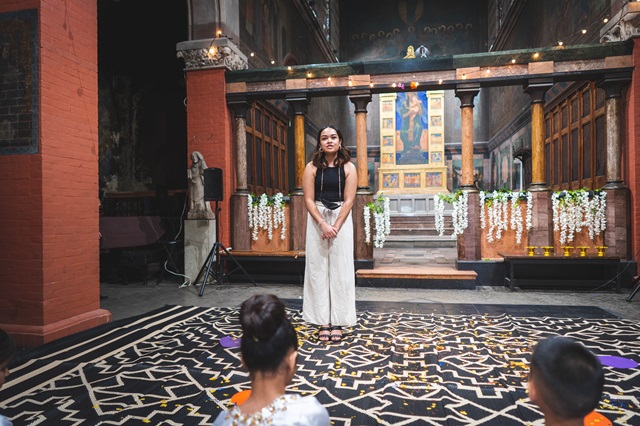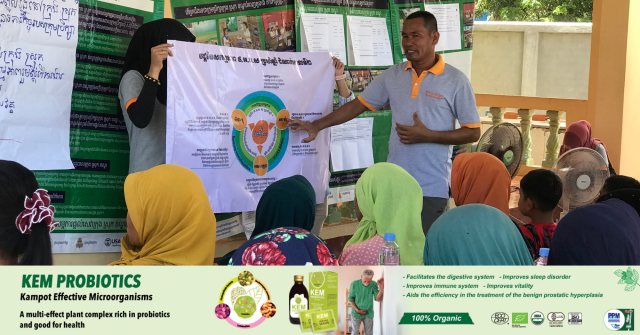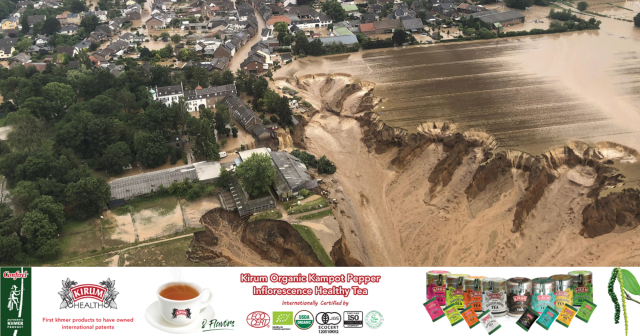“There’s no wrong kind of Asian”: A Cambodian-American Working on Flourishing Khmer Culture and Women
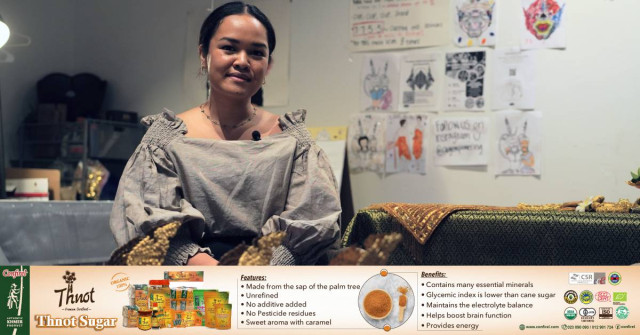
- By Teng Yalirozy
- January 2, 2024 11:55 AM
PHILADELPHIA – Like many Cambodian Americans from the diaspora, Lanica Angpak feels the need to preserve the Khmer culture and art in the U.S., hoping to keep it afloat within the community and among the next Cambodian-American generation. If she does not step up, Lanica fears the loss of her root identity and culture could be lost.
Meeting with two journalists from Thmey Thmey and Cambodianess who traveled to the US to learn about the Cambodia-U.S. cultural cooperation and promotion, Lanica spoke of her life in the country and her endeavor to promote the Khmer culture.
Where It All Started
Lanica Angpak, 31, is the second generation Cambodian-American born to a family of artists. Her mother is a Khmer traditional and classical dancer who came to the U.S. in the 80s after her home country emerged from the brutal genocide of the Khmer Rouge Regime.
Lanica’s mother learned to dance when she was a refugee in the Khao I Dang camp at the Cambodia-Thailand border, which hosted around 200,000 refugees after the fall of the Pol Pot Regime in 1979.
While some returned to Cambodia, others settled in Australia, France or the United States.
Like many Cambodians who fled the country, Lanica’s mother hoped to navigate a better life in America and contribute to a harmonious Cambodian community. After settling in Philadelphia, Pennsylvania, she got married and had two daughters.

Lanica and her mother who is a Khmer traditional and classical dancer and came to the U.S. in the 80s. This picture was taken in 2011. Photo provided
As a Cambodian growing up far from her ancestors’ country, Lanica has been inspired by her mother and her sister, who is now the writer, to take on dancing and build a close-knit space where everyone can learn traditional Khmer dancing and feel a sense of belonging.
“I used to be very mad because I felt like people didn't care that I was Cambodian or Cambodian American. And it's a very tough way to grow up,” she said. “I'm the youngest in the family. So by the time I started really learning, everyone stopped learning. But I remember watching my sister dance and watching my mom dance. Their hand gestures were so soft, they [could] kneel [down]. When my mom would do the Apsara dance, I would give her the flower, and she would pick it up.”
But Lanica’s will to learn about her traditions was being made harder by her classmates. She was bullied for looking different and made fun of for being the wrong type of Asian, and shy.
Because she didn’t look like others, it was thought that she couldn’t speak English – even though she was born and raised in the U.S. – and was put in the English class as a second language with other kids who spoke other languages.
“We grew up in a predominantly white community, and we got bullied for looking different. I can speak from my experience. There were kids who would call me gorilla because I was a little bit hairier,” she said.
“There's no wrong kind of Asian. You are who you are. Being the youngest, I saw what it meant for my older sister to be Cambodian American. Her feelings are differents to mine, but in the end, it is the same thing. Our experiences are different, but it’s also this thing that routes us together. I just love my sister and my mom.”
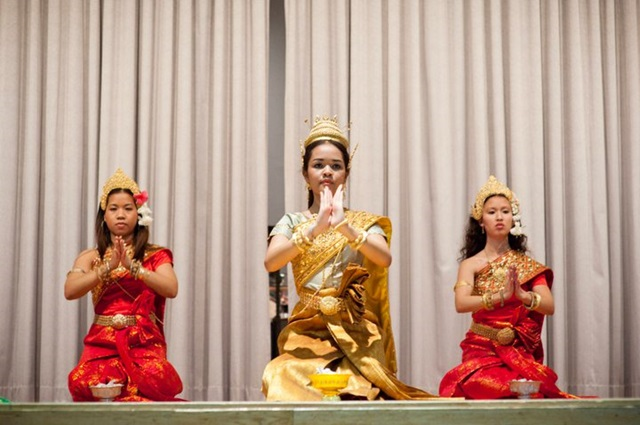
Lanica Angpak performed the Khmer dance in 2011. Photo provided
“Cambodian American Girls Empowering Helps Me Sit Up”
To initiate a friendly community where everyone, especially girls, was taking care of and helping each other to grow, Lanica co-founded Cambodian American Girls Empowering (CAGE) in 2015.
CAGE aims to foster a safe, courageous environment for Cambodian Americans to explore their shared identities, culture, heritage, and history, using art as activism for power.
“I had decided to leave another dance group with the Cambodian Association, because I just graduated college, and I wanted to do something different. And I knew that I wanted a space where young women could just talk about anything they wanted to,” she said.
CAGE is a community that emphasizes the power within individuals, which can be achieved through growth and collaboration with the right people in the right place.
CAGE welcomes students from age 5 where they come and learn the basics of classical dance. They also get the chance to perform during major events such as Khmer New Year in America. They get to dress up and wear beautiful traditional dancing costumes which Lanica and her mother brought from Cambodia.
“So for us, we want to teach, and we want to make the dance, culture and art accessible. But we also want to teach them how important it is how we almost lost it,” she said.
CAGE partners with the Cambodian Association of Greater Philadelphia, where she and the team do a banquet with 600 people every year. They also perform throughout the city, in different organizations, in the city hall, or at schools. Children get the chance to show off their dancing skills.
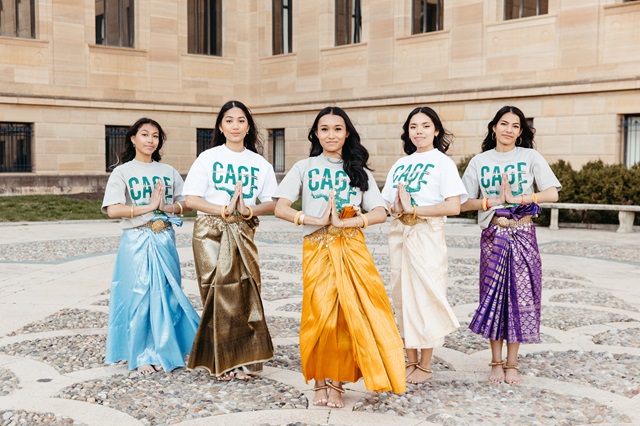
Students at the Cambodia American Girls Empowering (CAGE). Photo provided
The student group – 24 students – performs a recital two or three times a year for the Khmer New Year while the professional group – eight professionals – performs all year round, especially for the American events. They are Cambodians or mixed-Cambodians while some are Laos and Puerto Ricans who truly embrace and are keen on learning the dance and Khmer culture.
Lanica said seeing more kids participate in dance classes and adapt to their culture is inspiring. The act of performing is liberating and allows people to express their identity. This experience allows people to showcase their uniqueness and identity, allowing others to see their differences and celebrate their uniqueness.
A Group that supports Girls and Everyone
“We really wanted to make sure that there were spaces for anyone, for girls, boys, nonbinary, whatever it is that they felt comfortable coming in,” she said, adding that there is a lot of misogyny in the U.S. where people look down on and verbally abuse women as well as nonbinary people.
Despite theoretically ensuring equal rights between men and women, the U.S. Constitution is one of 28 globally without explicit sex equality guarantees, leaving American women under-protected. Thirteen states lack definitions or penalties for domestic violence in their criminal code, making femicide prosecution more challenging.
“We want to be very specific about wanting to create space for growing together and learning together. And that means being able to face hardships together and knowing that girls face a lot of hardships that no one talks about. So really being able to emphasize our experience in our name was important,” she said.
Lanica recalled that people used to perceive the dancer females as prostitutes while sarcastically saying the dancers, if married, should take care of the home and the husband and not be coming out to perform.
Whereas in Cambodia, gender norms perpetuate inequality, limiting women's rights and increasing poverty, empowering girls is crucial for development. But fewer girls complete school than boys.
Culture, Society and Transformation, But Old Pattern Should Still Be There
“Art and culture transform as society changes. And I believe that it should be preserved like the way that things are,” said Lanica.
She hopes for recognition and spaces for change in the Cambodian American community as the community continues to grow and define their identities. She aims to make the community more accessible by embracing change and respecting and honoring what is important while preserving the culture.
“To make it more accessible means it has to change just a little bit. It doesn't mean that it's disrespectful, but that we're trying to respect it as much as we can,” she said.
Recognizing the harm done by Western powers, such as America, to Cambodia, is essential, especially when it comes to cultural aspects, with many Khmer artifacts still being displayed in the world’s museums, while they belong to the Cambodian people, she said.

Students at CAGE. Photo provided
By implementing systems, and resources, and addressing discomforting aspects, she said it can create a better future. By addressing past issues and addressing perpetuating harm, it can also create a more inclusive and sustainable global community.
“I think for me, it's very magical. Because sometimes I can't believe that I can teach,” she said. “I wouldn't say I'm the best dancer. But I think it's the love of it. Coming together and being able to work and laugh together makes my heart very full.”
